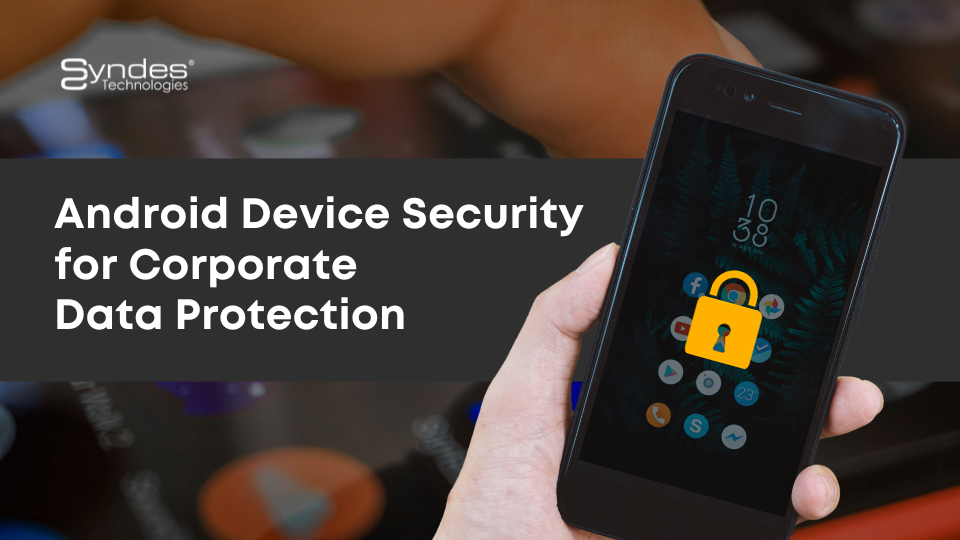7 Important Factors to Consider When Choosing an MDM Solution
Mobile devices like smartphones, tablets etc have become an indispensable and an essential factor in the corporate world and are being widely used for work purposes. Organizations are increasingly realizing the power of a flexible and mobile work environment. In a flexible and mobile work environment, employees access organizational data and content on mobile devices from any place on the globe, at any time. This helps employees to in striking a balance between their professional and personal life, and it helps companies to establish a seamless communication between the field employees and base office. However, Enterprise Mobility may lead to critical security concern for business data, apps, and devices if not managed and secured efficiently. Thus, to meet the security challenges, Enterprises needs a powerful and secured Mobile Device Management (MDM) Solution. An MDM solution monitors, secure and controls the mobile devices used by the employees for the work purpose, in the office environment. It allows access to corporate apps, data, and content under assured security.
Enterprise Mobility involves challenges and, organizations are required to choose from several mobility solution providers in the market. Hence, before choosing an MDM solution, companies need to do a thorough requirement and feasibility analysis. After the analysis, prepare a comprehensive report of all their pain points and based on that prepare to choose an MDM solution. To ensure Enterprises choose the right MDM solution, there are important factors which are required to be considered.
Here are 7 Factors you Must Consider While Choosing a Mobile Device Management (MDM) Solution
1. Types of the devices supported
As we are already aware, there are different types of smartphones, tablet and different operating system used by different organizations. For e.g., some organization deploys Android devices, while some iOS or Windows. Even in Android, some deploy Samsung or LG, hence depending on the operating system and make, organizations first need to figure out which devices and operating systems they would like to deploy for their requirement and in their budget. Based on that they can search for those solutions which provide solutions and support those devices specifically.
2. Security Management
The critical aspect of the selection of any MDM solution is security management. Security management refers to ensuring the safety of the business data, business content and devices. Since field employees or regular employees will be accessing the corporate data from any place and any time, proper authentication, passwords, and encryption aspects must be in place. The solution should ensure proper lockdown or the usage restriction of the devices, since employees may misuse the device and access social media, or gaming websites or apps which may lead to malware into the system. In case of theft, a provision for the remote wipe out and/or capturing of the identification details like location, time and device thief, is highly recommended.
3. Trial Period
Almost all solution providers give a trial period, in which an organization can deploy the solution, enrol their devices and work on it. During this time, you can actually find out hands on whether the mobile device management solution will be able to cater to your requirement or not. If you think, it will not, you have the option to opt out and not continue further. Many solution providers even extend the trial periods on customer’s request.
4. App Management
Your organization may need specific business apps or third-party apps; hence you need to look out whether app management is part of the Mobile Device Management solution or not, how are the app updates distributed on the enrolled devices.
5. Device Monitoring
Depending on your requirements, up to what level do you want mobile devices to be monitored and controlled. Whether the solution provides location tracking and geofencing features or not, whether they provide single app mode or multi-app mode, whitelisting and blacklisting of the websites and number of other features.
6. Content Management
Security of business content is one of the critical priorities of any business. Good mobility solution enables the organization to upload, distribute and modify the content from the central dashboard to the enrolled devices. This is very useful in use cases where a field employee or a sales rep needs the business presentation to show to clients.
7. Support and Service Management
After deployment of the MDM software, you will require proper support from the provider until it successfully implemented across all the enrolled devices. Generally, support and after-sales services are the deciding factors for any organization. It is better if support is provided by the SaaS provider. Hence, always do your research thoroughly and find out which providers give good support and services based on user reviews.
To sum up, it is important to understand the pros and cons of any Mobile Device Management solution before deciding whether it is the best fit for your organization or not. Organizations should ideally look out for the differentiating factors and then comprehensively prepare to choose the right MDM Solution. The differentiating factor can be in terms of cost, features or support and service. The solution can be cloud-based or on-site or it can be providing a number of features but out of that you may require only a few of them, hence all such points, if evaluated with some research and analysis can lead to a better decision, and thus leading to better ROI and efficient management, control and security of the corporate-owned mobile devices.



